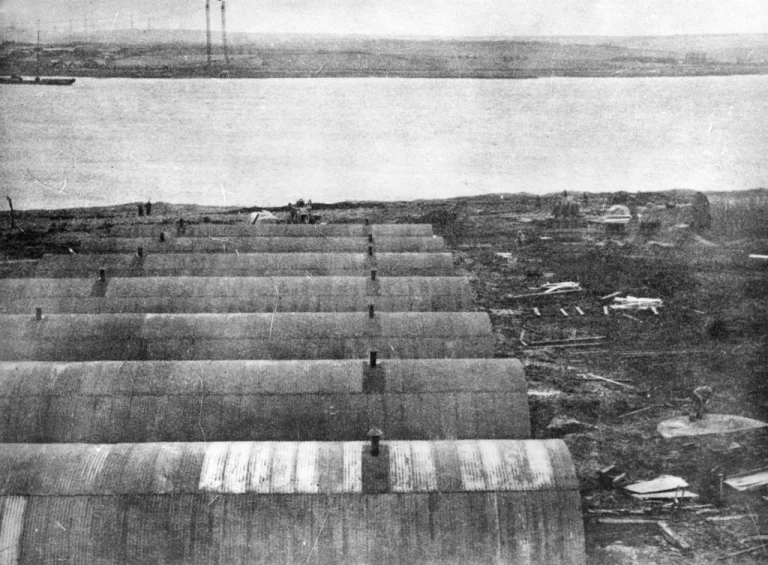World War II – Building the Barriers

Permanently blocking the entrances to Scapa Flow had been suggested in 1912, but it was the loss of HMS Royal Oak in 1939 that prompted action. Winston Churchill, then First Lord of the Admiralty, ordered the building of four causeways (now known as the Churchill Barriers) linking the islands of Lamb Holm, Glimps Holm, Burray and South Ronaldsay to the Orkney Mainland. Balfour Beatty & Co. Ltd. began construction in May 1940 and they were officially opened as public roads on 12 May 1945.

Italian Prisoners of War

By the end of 1940 Balfour Beatty were facing labour shortages. The solution was to bring in Italian Prisoners of War (POWs) and in early January 1942 the first group of Italians arrived, accommodated in camps on Lamb Holm and Burray.

Problems arose when they refused to work because the barriers contributed to the war effort and contravened the treatment of POWs as set out in the Geneva Convention. The strike was called off after the authorities successfully argued that they were not building barriers, but improving communications to the South Isles.


When Italy capitulated in September 1943, the men were no longer prisoners. Those who stayed were now paid to work and not restricted to their camp By September 1944, work had almost finished, and the Italians were moved south.



The Italian Chapel

The Italian Chapel is a beautiful, highly ornate, Catholic chapel on Lamb Holm. It was built by the Italian POWs, who were housed on the island while they constructed the Churchill Barriers. One of the Italian prisoners, Domenico Chiocchetti, was the driving force behind the project. He was a skilled artist, responsible for the painting and decorative work, including the altarpiece of the Madonna and Child.
He based this on a Barabino painting, The Madonna of the Olives, which was on a prayer card given to him by his mother. After the POWs left in 1944, Chiocchetti remained behind for a short time to complete his masterpiece.

The chapel was saved from destruction when the POW camps were torn down after the end of the war. In 1960, Domenico Chiocchetti, then living in Moena, Italy, returned to assist with the restoration project.

To learn more about the building of the Churchill Barriers visit the Fossil and Heritage Centre, Burray, and pay a visit to the Italian Chapel which is close by.
Scapa Flow Museum is currently closed for a major refurbishment project, funded by Orkney Islands Council, National Lottery Heritage Fund, Historic Environment Scotland, Highlands and Islands Enterprise, Museums Galleries Scotland, Scottish Natural Heritage and the Orkney LEADER fund. The project includes carrying out essential repairs to Pumphouse No. 1 and building an extension to house a new gallery, visitor facilities and café.
Visitors can virtually explore the buildings and former exhibitions at www.hoydrone.com/museum, a 3600 photo record of the main site museum site.
The Island of Hoy Development Trust website www.hoyorkney.com has a large Wartime Heritage section focusing on the WW2 history of Hoy.


